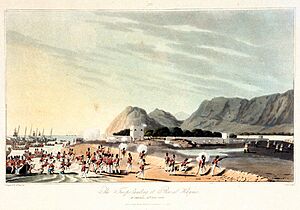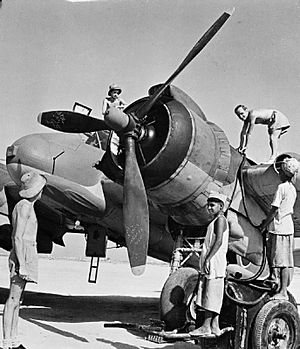Trucial States facts for kids
Quick facts for kids
Trucial States
إمارات الساحل المتصالح (Arabic)
|
|||||||||||||||||||||||
|---|---|---|---|---|---|---|---|---|---|---|---|---|---|---|---|---|---|---|---|---|---|---|---|
| 1820–1971 | |||||||||||||||||||||||
|
Flag of the Trucial States Council
(1968–1971) |
|||||||||||||||||||||||

The Trucial States in 1867
|
|||||||||||||||||||||||
| Status | Persian Gulf Residency of India (1820–1947) British Protectorate (1947–1971) |
||||||||||||||||||||||
| Common languages | Arabic English |
||||||||||||||||||||||
| Religion | Sunni Islam | ||||||||||||||||||||||
| Demonym(s) | Trucials | ||||||||||||||||||||||
| Government | Tribal confederation(s) | ||||||||||||||||||||||
| Historical era | New Imperialism to Cold War | ||||||||||||||||||||||
|
• General Maritime Treaty
|
8 January 1820 | ||||||||||||||||||||||
|
• Perpetual Maritime Truce
|
4 May 1853 | ||||||||||||||||||||||
|
• Trucial States Council
|
21 March 1952 | ||||||||||||||||||||||
|
• End of protectorate
|
1 December 1971 | ||||||||||||||||||||||
| 2 December 1971 | |||||||||||||||||||||||
| Currency | Ottoman Lira (1820–1899) Indian Rupee (1899–1959) Gulf Rupee (1959–1966) Bahraini Dinar (1966–1971) |
||||||||||||||||||||||
|
|||||||||||||||||||||||
| Today part of | |||||||||||||||||||||||
The Trucial States were a group of small states in the southeastern Arabian Peninsula. Their leaders signed special agreements, called "truces" or treaties, with the United Kingdom between 1820 and 1892. The British government gave them names like the Trucial Coast or Trucial Oman.
These states were under British protection until the treaties ended on December 1, 1971. The very next day, six of these states—Dubai, Abu Dhabi, Sharjah, Ajman, Umm Al Quwain, and Fujairah—came together to form the United Arab Emirates. The seventh state, Ras Al Khaimah, joined them a bit later, on February 10, 1972.
Contents
What Were the Trucial States?
The Trucial States were made up of seven different areas, each led by its own ruler, called a sheikh. These areas included:
- Abu Dhabi (from 1820 to 1971)
- Ajman (from 1820 to 1971)
- Dubai (from 1833 to 1971)
- Fujairah (from 1952 to 1971)
- Ras Al Khaimah (from 1820 to 1972)
- Sharjah (from 1820 to 1971)
- Umm Al Quwain (from 1820 to 1971)
These states formed a lasting alliance with the United Kingdom through a series of treaties. The first important one was the General Maritime Treaty of 1820. Later, in 1853, they signed the Perpetual Maritime Truce. By 1892, they made "Exclusivity Agreements" with Britain. This meant Britain would protect them from outside attacks. In return, the states agreed to only deal with Britain and not with other foreign governments.
Fujairah was the last state to be officially recognized as a Trucial State in 1952. This happened because a company wanted to explore for oil along the coast.
In 1952, the Trucial States Council was created. This was a group where the seven rulers could meet and work together. For a long time, the Indian rupee was the main money used in these states. Later, the Gulf rupee was introduced.
The 1820 Treaty and Peace Efforts
The British used to call the southeastern Persian Gulf coast the "Pirate Coast." They believed that groups from this area, especially the Al Qasimi families, were attacking British ships.
There were many small fights between the Al Qasimi and British ships starting in 1797. The British launched major attacks on coastal towns in 1809 and 1819. After these attacks, a peace treaty was signed in 1820. All the local rulers agreed to it.
Some of the rulers who signed the treaty included Sultan bin Saqr Al Qasimi of Sharjah and Hassan Bin Rahma Al Qasimi from Ras Al Khaimah. The ruler of Abu Dhabi, Shakhbut bin Diyab Al Nahyan, also signed for his son. The rulers of Ajman and Umm Al Quwain joined later.
Even after this treaty, small conflicts continued until 1835. Then, the rulers agreed to stop fighting at sea. They signed more treaties, leading to the Perpetual Treaty of Maritime Peace in 1853. This agreement helped bring peace, especially for the important pearling trade. Separate treaties were also signed in 1847, 1856, and 1873 to stop the slave trade.
The 1892 Exclusive Agreement
In 1892, Britain and the Trucial States made their relationship even stronger. This was mainly because Britain was worried about other countries like France and Russia trying to get involved in the region.
Under this new "Exclusive Agreement," the rulers promised not to sell any land to anyone except Britain. They also agreed not to make deals with any other foreign governments without Britain's permission. In return, Britain promised to protect the Trucial Coast from attacks by sea and to help if there was an attack on land. This important treaty was signed by the rulers of Abu Dhabi, Dubai, Sharjah, Ajman, Ras Al Khaimah, and Umm Al Quwain in March 1892.
Air Travel Comes to the Region
In the 1920s, the British government wanted to create a new air route from Britain to India. This led to talks with the rulers of the Trucial States about places for planes to land and refuel. At first, the rulers were hesitant because they worried about losing control of their land. However, these air agreements also brought them money.
In 1932, an airfield opened in Sharjah. By 1937, large flying boats from Imperial Airways started landing in Dubai. These flights continued for the next ten years, connecting the region to the wider world.
The Trucial States Council
The Trucial States Council was a special meeting place for the rulers of the emirates. A British official usually led these meetings. The first meetings happened in 1952, and they continued twice a year. The council was a place for the rulers to talk and agree on common plans, but it didn't have official power to make laws.
The rulers sometimes got annoyed with the British. For example, when the ruler of Fujairah joined the council in 1952, some rulers were not happy.
By 1958, the council started setting up groups to help with public health, farming, and education. However, it didn't have its own money until 1965. At that time, one of the rulers, Shaikh Saqr bin Mohammed Al Qasimi of Ras Al Khaimah, became the chairman. The council also started getting money from the British to use as they saw fit.
One big problem the council often discussed was locusts. These insects caused a lot of damage to farms. But the local people in the desert didn't want insecticide sprayed, as they thought it would harm their animals.
The End of the Trucial States
On January 16, 1968, the British Prime Minister, Harold Wilson, announced that all British troops would leave the region. This meant Britain would no longer handle the foreign policy and defense of the Trucial States.
This decision caused a lot of urgent discussions among the rulers of the Trucial Coast, along with Qatar and Bahrain. They needed to figure out how to manage their own affairs after the British left.
The idea of forming a union was first agreed upon by Sheikh Zayed bin Sultan Al Nahyan of Abu Dhabi and Sheikh Rashid of Dubai on February 18, 1968. They met in the desert and decided to work towards bringing other states, including Qatar and Bahrain, into a new union.
Over the next two years, there were many meetings and tough negotiations. The plan for a nine-state union (including Qatar and Bahrain) didn't work out. Qatar and Bahrain decided not to join. This left six emirates to agree on a union on July 18, 1971.
On December 2, 1971, Dubai, Abu Dhabi, Sharjah, Ajman, Umm Al Quwain, and Fujairah officially joined together to form the United Arab Emirates. Ras Al Khaimah, the seventh emirate, joined the UAE on February 10, 1972. This happened partly because Iran took control of some islands (Greater and Lesser Tunbs, and Abu Musa) that were claimed by Ras Al Khaimah and Sharjah, right after the British left.
See also





